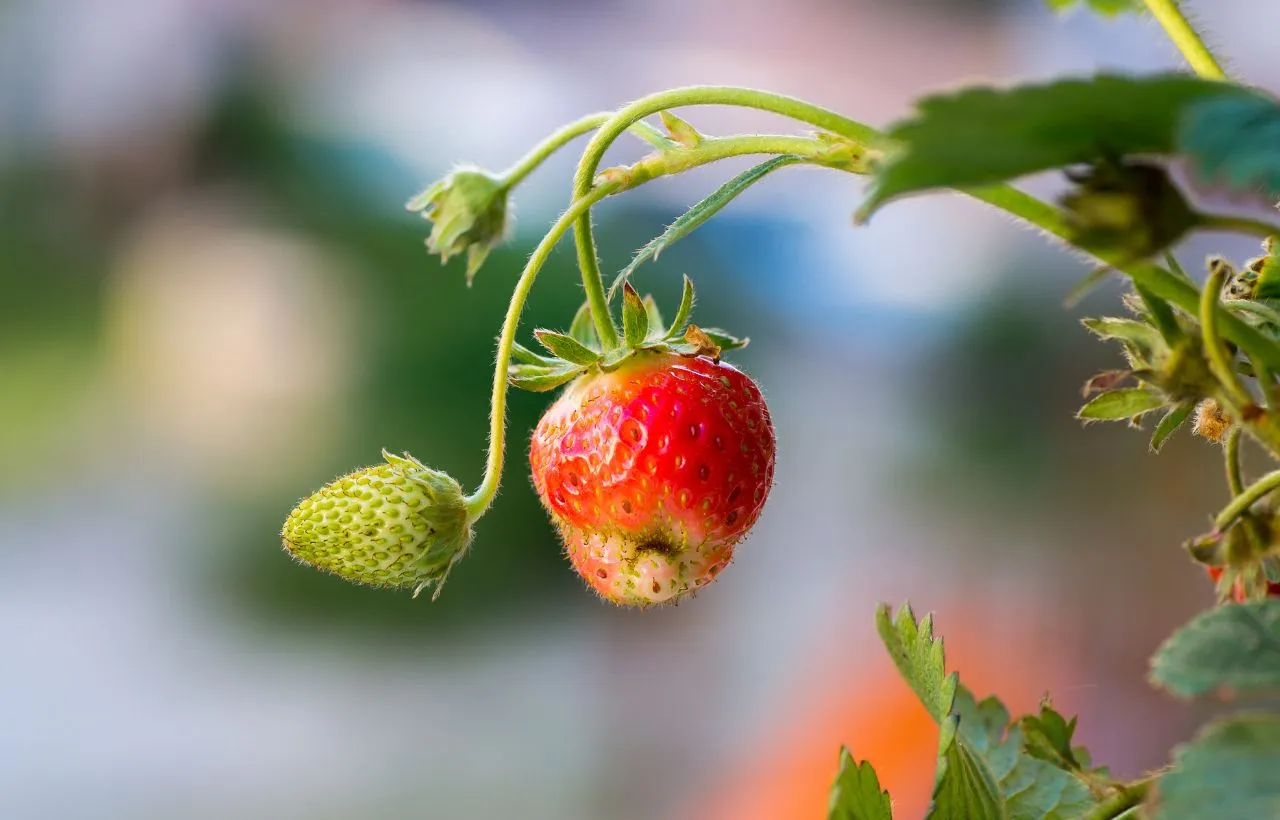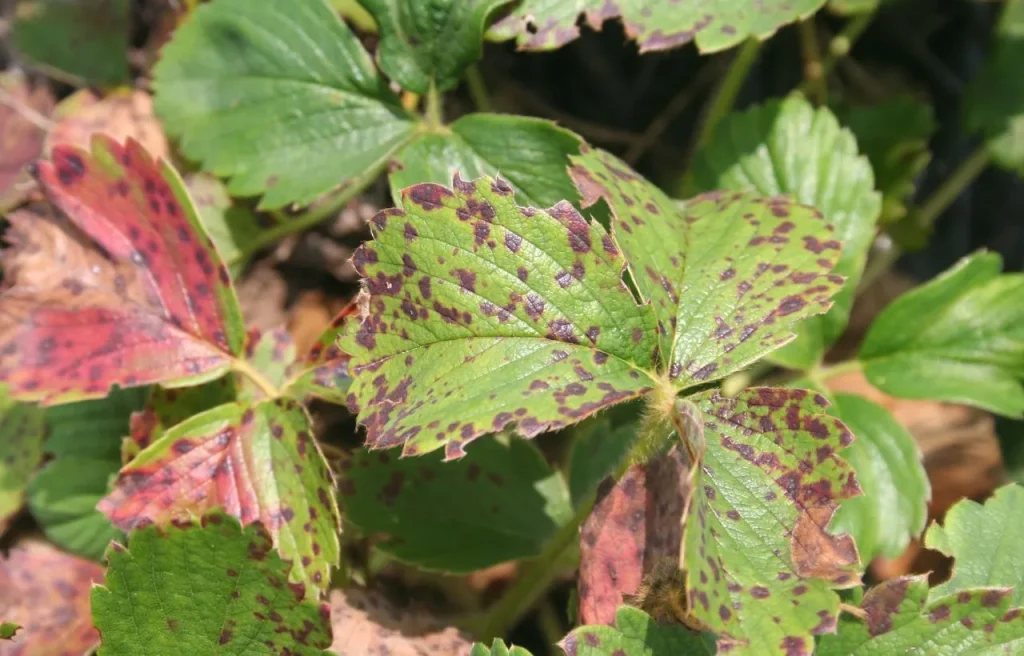We all love those luscious, and round, red strawberries of summer. Overall many gardeners plant these strawberries in their home garden beds or pots. Eventually, they can taste their strawberries and get a fantastic result from their labour. It is delightful. In this article, we will know how to control the strawberry disease plants and fruits.
But gardening is not free of pests and other issues! Yes, strawberry plants and fruits also face many diseases. A beginner gardener may feel anxious about what’s happening to his strawberries.
But do not feel worried about it. I have some tricks, and little instructions that can help you control those unexpected diseases and the curing process.
So, any beginner or gardener who is facing diseases while raising your strawberries, this write-up is for you guys. Are you ready to start the battle against your strawberry pests? Here we begin!
Why do strawberry plants get diseases?
These nutritious fruits are full of goodness. You can get your caloric, vitamin C, energy, and water from your garden fresh strawberries. But what if your strawberries are not okay and are catching some strawberry diseases?

Well, there are a couple of reasons- like not well-drained soil, improper soil preparation, water clogging, less sunlight, and many other factors. Frost, temperature stress, and other climatic conditions can trigger the strawberry disease. Less spacing on the garden bed between the plants and rows can influence the disease spread. Sometimes the faulty seedling depths can be a reason.
Common Strawberry Diseases
Anthracnose- a fungal disease. The fungus that causes this disease is Colletotrichum fragaria and other Colletotrichum spp.
Symptoms
It can lesion the strawberry runner. And discolour the crown revealing; that fruits infected, leaves,
fruits and flowers are damaged.
Management
- Do not use excessive nitrogen fertilizer.
- Sunlight soil may kill the soil inoculum fungus
- Fumigating the soil may help to reduce the inoculums fungus
- Wash all soil from plant crowns before planting.
Gray mould is another fungal disease; known as Botrytis fruit rot and blossom blight. Botrytis cinerea causes this disease.
Symptoms
Rotten fruits and fruits have a grey colour moulding at the fruit body.
Management
- Pluck off the infected fruits
- Cover your strawberry fruits and plants with plastic.
- Remove and destroy all dead or infected material.
- Use mulching to prevent the soil and strawberry fruits interaction. The mulching will hold up the strawberries from the soil.
- Try to plant the strawberries in a windy place; so that the wet plants and fruits can dry out
quickly after watering. - After harvesting, plough crop debris into the soil and this will help to enhance organic
matter.
Leaf scorch is, again, a fungal disease. Diplocarpon earlianum causes this disease.
Symptoms
- Leaf scorch lesions
Management
- Try to plant resistant varieties
- with good air circulation and drainage in full sun
- Regular renewal of plants
- Application of foliar fungicides.
- Remove all foliage after fruit harvesting
Leaf spot is another fungal disease that happens due to Mycrosphaerella fragariae fungi.
Symptoms
- The disease of leaves. Brownish spots on the leaves.
- The disease can spread due to water splashing.
Management
- Plant disease-free stock
- And apply the optimum amount of foliar fungicides to the strawberry plants.
Phomopsis leaf blight is another fungal disease of strawberry leaves. It happens due to the attack of the Phomopsis obscurants.
Symptoms
- Leaf blight on strawberry leaf
- Zonal lesion on strawberry leaves.
Management
Try to remove the affected leaves as soon as possible to control the disease and protect the
healthy strawberry leaves.
Powdery Mildew is also a fungal disease happening due to Spaerotheca macularis fungi.
Symptoms
- Powdery mildew on leaves
Management
- Apply fungicides as soon you see mildew like sulfur and other stuff.
- Do not practice overhead irrigation.
- Remove the dead leaves after harvesting to reduce the fungal infection
- The angular spot is a disease caused by bacteria named Xanthomonas fragariae.
Symptoms
- Angular leaf spot
- Infected black calyx
Management
- Try to use certified plant stock
- Rotate crops and avoid overhead irrigation
- Red stele or Red core is an oomycete happening due to Phytophthora fragariae.
Symptoms
- Red stele in the roots and longitudinal sections of the roots represent the red stele
Management - Try to plant the strawberries in a raised bed for proper drainage.
- Avoid plant beds which had red stele before
- Charcoal rot is another disease caused by Macrophomina phaseolina
Symptoms
- Wilting of plants
- Discolouration of crown and damage
- Roots are hampered
Management
Needs proper watering because the disease can initiate the disease when the weather is
warm or in summer seasons.
Other difficulties that a gardener might face are slugs, bugs and loopers, weevils, spider mites and other pests. In this case, you need insecticides for your healthy strawberry plants and fruits.
How to control strawberry diseases?
Fungal infection is something in case of any fruiting or veggie garden that makes a new or
experienced gardener upset. So, you can use fungicides and organic home methods to prevent the
fungal diseases of strawberries. You can maintain the following instructions for prevention:
- Sowing your seedlings in well-drained soil. Sandy loamy soil is best for it. Soft, loose,
and rich in organic matter. - Collect your seedlings. You may make sure they are pest-free. And plant runners or stem
cutting from healthy strawberry plants. - Use fungicides to control the pest in the strawberry plants.
According to the research of Surendra Dara PhD, Strawberry and Vegetable Crops Advisor University of California Cooperative Extension USA, it is best to conduct the Integrated Pest Management (IPM) for any disease of your sweet strawberries. This pest management technique addresses the chemical, biological and cultural practices. Let’s have a look at the three of these practices broadly-
Cultural practice
Use resistant varieties of seedlings, proper cooling facilities for the seedlings in the summer,
maintain clean and weed-free garden beds for your strawberries and optimize the mulching
practice protecting your strawberries.
Biological control
Use the neighbouring fruits and plants that help to reduce the diseases of strawberry plants like
sunflowers and onions. Then you can use fewer chemicals; otherwise, beneficial organisms may
also die.
Chemical practice
One can practice crop rotation and use the doses of the chemical in different modes to see the
best results. Of course, consult an expert before dosing.
Common fungicides and their application rates
There are some most common fungicides that you can use in the strawberry garden bed for better prevention. Even you can convert the application rates of these fungicides for your potting mix. The common fungicides according to Colorado State University Extension are right below-
| Aluminium tries | Foliar application: 1-2 KG per 43,560sq ft garden bed. After plant growth re-apply the aluminium tries within 50-60 days. |
| Actinovate AG | 1-5 kg per 43,560 sq ft in soil preparation.
1-5 kg of activated AG in 20-200 gallon water for foliar spray. One can spray this in 2 weeks intervals. Best for organic production. |
| Potassium bicarbonate | 1.1 – 1.3 kg per acre when you notice the diseases |
| Copper compounds | This helps to reduce the leaf spot and try to apply it before the blooming season and after fruit harvesting. |
| Captan fungicide | It is best to use it before fruit appearance in the spring actually. |
There are many other fungicides popular to control the strawberry disease to confirm you the
garden-fresh berries.
FAQ
However, many gardeners are worried about their strawberry garden or fruits due to diseases like
you. In the following section, there are some FAQs for these gardeners. And you can relate to the
questions. They are-
How do you get rid of fungus on your strawberry plants?
Of course, fungicides are the best option to put while soil preparation for your strawberries. But
spacing in the garden bed, drainage, and proper wind circulation can reduce the fungal infection.
What can I spray on my strawberry plants to keep the bugs away?
You can spray insecticides. Neem oil and garlic water, and pepper mix spray on the plants can
help. Again you can put a mesh net or plastics on your strawberry plants to keep the bugs away
without any spray.
At which temperature the strawberry gets most of the diseases?
Eventually, the strawberry can tolerate optimum temperature to minus freezing temperatures. But
high temperature and high humidity can cause damage to the strawberry plants. The best
temperature for strawberry plants is 15 to 26°C.
Conclusion
Don’t get upset with your home garden if it is infected. Especially in the case of strawberries, you
might think you will not get the fruits this season.
But adequate- drainage, timely detection of diseases, and the proper appliance of fungicides and
insecticides can help you to get rid of this problem. So, I hope this reading has helped you to win
the battle against pests and bugs of strawberry plants.
Happy Strawberry gardening!

